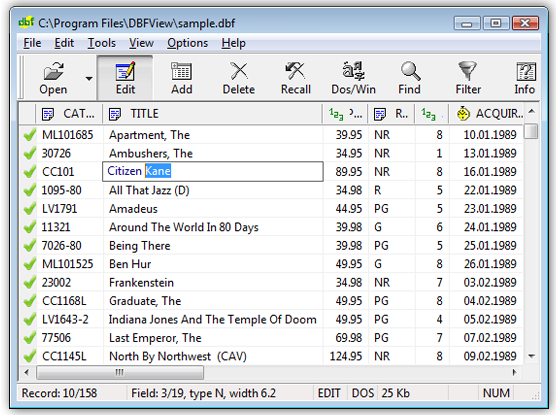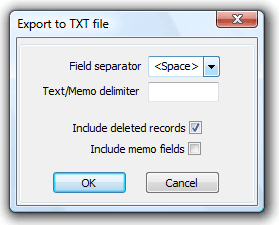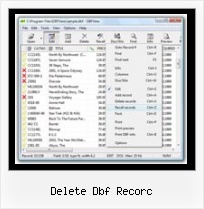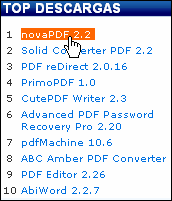DBF File Viewer

DBF Converter & DBF Viewer - the most popular
DBF editor and viewer for
Windows 9x/NT/2000/XP/Vista/Win7!
View dbf file, edit dbf file, and print dbf files!
DBF Converter & DBF File Viewer is a compact but powerful tool for viewing, editing, and printing DBF-format databases. DBF Converter & DBF Viewer uses its own database access tools and does not require external drivers for connection to databases (such as ODBC or BDE) or additional libraries (.OCX, .DLL). The program allows you to add, delete, recall, sort, zap, pack records, view and edit files in DOS or Windows character sets, get detailed database information, export to txt/html/csv/xls/xlsx format, and search in a file.
Overview
DBF Converter & DBF Viewer is a compact but powerful tool for viewing, editing, and printing DBF-format databases - screen shot.
It supports dBase, Clipper, FoxPro, Visual FoxPro and other DBF file formats. In contrast to many analogues, DBF Converter & DBF Viewer is completely a Windows 9x/NT/2000/XP/Vista program. The user friendly graphic makes working with databases simple and hassle free.
Most important parts of DBF Converter & DBF Viewer code are written in Assembler, therefore the basic operations performs fast and the .exe file is very small (only 410Kb!).
DBF Converter & DBF Viewer uses its own database access tools and does not require external drivers for connection to databases (such as ODBC or BDE) or additional libraries (.OCX, .DLL).
The program allows you to add, delete, recall, sort, zap, pack records, view and edit files in DOS or Windows character sets, get detailed database information,export dbf files to txt/html format, convert csv and xls / xlsx to dbf format, import/export from MS Excel (including MS Excel 2007!), and search in a file. DBF Converter & DBF Viewer comes with Installer/Uninstaller, documentation in HTML format, and sample files.
How to Use
Convert DBF to TXT or DBF to HTML
Export DBF to text/HTML
Converts dbf database contents to html or text file. You can select delimiters/separators, include deleted records and memo fields to output file.

Order DBF Converter & DBF Viewer for Windows
Ordering online is easy and secure. You can select the most suitable payment method: credit card, bank transfer, check, PayPal etc.. Paying a registration fee, you get the right to use the program for life and to get free updates within one year.
dbf edit source code cPostal Address
For feature requests, troubleshooting, general help contact Customer Support at  . Make sure to include details on your DBFView version, a link (or relevant code), browser and operating system.what s foxuser fpt extension
. Make sure to include details on your DBFView version, a link (or relevant code), browser and operating system.what s foxuser fpt extension
Feedback
Henry Taylor - Software Developer
I don't do a lot of work with databases, but in connection with a research project I got hold of a CD with a 30-meg DBF file on it - 74,624 records, 23 fields, total of field widths 414 characters. At first I tried copying the file to the hard drive and reading it with Quattro Pro. This was possible, but it was slow, and pushed the program to an intolerable number of illegal errors leading to shutdown. So I went on the net and searched for DBF readers, hit apycom.com pretty soon, read the home page and decided DBFView sounded useful and inexpensive, downloaded it, and have found it to be very serviceable. The program was easy to install, reads quickly from the CD-ROM drive, finds individual records reliably and quickly enough for my purposes, and in general seems like a tremendous bargain.
Mario Secco - Software Manager
We develop application software using any kind of DBF format file. The DBF files generated (FoxPro DBFCDX in windows format) are different from the equivalent FoxPro generated in DOS format: as a result of that the utilities I use to maintain the DBF files (mainly DBU of Clipper) are enable to manage all formats. I should have at least 3 versions of the same utility. For this matter I started a research on the web to find a more rational tool. I've downloaded several DBF managers very good products but they don't solve the compatibility problem. Only DBFView has the main feature I'm searching for : it recognizes the DBF format! And then the graphical interface of DBFView is very user friendly, agreeable to see, and the exe is very small.
Byron Pate - Software Developer
First off I would like to tell you what a great product DBFView is. I'm trying to convert a large dbase file into SQL Server and the dbf file is giving me a great deal of problems, and DBFView has allowed me to go in and find the records with problems and fix them.
Screenshot
Awards
Blog
HTML Code Creator - HTML Code Generator
Website Design Tool - Website Design Program
Excellent HTML Code Generator Drag And Drop You Must Try
Easiest Website Builder For Beginners - Easiest Website Builder For Beginners
Artist & Photographer Website Builder
More
Open DBF File
Export CSV to DBF
Export DBF to Excel
Convert XLS to DBF
Edit DBF File
Convert DBF to CSV
Import XLSX files to DBF
Convert DBF to Excel 2007
Convert Excel 2007 To Database
Covert Dbf To Excel
Download Sofwer Dbf
Come Convertire File Dbf In Xls
How Do You Open Dbf
Importing Dbf To Excel
Estensione Dbf
Bring A Dbf Into Excel
Excel Dbf 2007
View And Edit Dbf
Export Dbf To Access
Csv Nach Dbf Importieren
Dbfview Full
Konverze Xls Na Dbf Free









